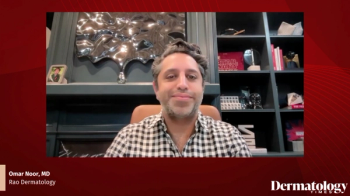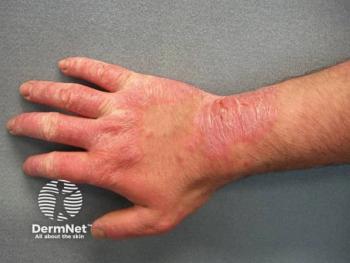
- Dermatology Times, May 2025 (Vol. 46. No. 05)
- Volume 46
- Issue 05
Dermatology Times May 2025 Print Recap
Key Takeaways
- Topical steroid withdrawal is being investigated as a distinct dermatologic condition with unique features, highlighting the importance of proper management in atopic dermatitis.
- GLP-1 receptor agonists, primarily used for diabetes, show potential in psoriasis management due to their anti-inflammatory effects, warranting further exploration in dermatology.
Learn more about the in-depth topics covered in the May 2025 print issue of Dermatology Times.
The May issue of Dermatology Times includes a collection of thought-provoking articles and topics ranging from topical steroid withdrawal to the role of GLP-1 receptor agonists in psoriasis. Be sure to read the highlights from the issue below. Also, don’t miss a moment of Dermatology Times by signing up for our
Topical Steroid Withdrawal: Uncovering Neuroinflammatory Mechanisms
The controversy surrounding the use of corticosteroids and topical steroid withdrawal (TSW) syndrome has recently piqued the interest of research teams within the National Institutes of Health’s National Institute of Allergy and Infectious Diseases, prompting a scientific investigation into whether TSW constitutes a distinct dermatologic condition with unique cutaneous features.
Topical corticosteroids remain the first-line treatment for chronic inflammatory conditions such as atopic dermatitis, which affects 10% to 20% of pediatric dermatology patients and 2% to 10% of adults. Research has highlighted the impact of unmanaged atopic dermatitis, particularly in children, showing an association with behavioral concerns. This is largely due to sleep disturbances that can hinder development, underscoring the importance of proper management.
Exploring the Role of GLP-1 Receptor Agonists in Psoriasis
Genetic, environmental, and immune factors play a key role in psoriasis as a chronic inflammatory skin condition. Its inflammation is driven by immune cell migration and the secretion of proinflammatory cytokines, including tumor necrosis factor-α (TNF-α), IL-17, and IL-23.
Although traditional treatments target immune dysregulation, recent studies have explored the potential role of glucagon-like peptide-1 receptor agonists (GLP-1RAs) in managing psoriasis. These medications, primarily used for type 2 diabetes and obesity, exhibit anti-inflammatory and immunomodulatory effects that may benefit patients with psoriasis. With increasing interest in repurposing GLP-1RAs for dermatologic conditions, dermatology clinicians must understand their mechanisms and clinical implications.
#DermTok: Navigating TikTok’s Acne Advice Misinformation
As TikTok and other social media platforms continue to influence
how patients seek dermatologic advice—particularly around acne—clinicians are confronting online misinformation. While the hashtag #DermTok garners billions of views, studies show the majority of popular videos lack clinical accuracy, prompting calls for more evidence-based content from board-certified professionals like Chris Tomassian, MD, and Adam Friedman, MD, FAAD.
With the overwhelming number of acne treatments, patients often turn to social media to seek health care information from others’ experiences. Because of this, the spread of misinformation is a concern in the clinical space. Even with its potential ban in the US, TikTok has become a source of education for patients, especially in dermatology. Around the world, TikTok has over 1.04 billion active users each month, and 44.7% of these users are among Gen Z.
Missed Diagnoses, Missed Opportunities: Closing the Gap in Skin Cancer for Patients of Color
As a fellowship-trained Mohs surgeon, I spend most of my time treating skin cancer and reassuring patients as they face one of the scariest moments of their lives. Although this is a daily occurrence, some cases never leave your thoughts—even after clinic is over. One patient has never left my mind: A 50-year-old Black man who came to the emergency department because of a bleeding lesion on the bottom of his foot. By the time he was finally diagnosed with acral lentiginous melanoma, the cancer had already metastasized.
This is not a unique case. This patient’s story is a snapshot of a larger systemic issue in our field. We must urgently call to action the need to improve health care outcomes for health and cancer disparities in minority populations.
Articles in this issue
Newsletter
Like what you’re reading? Subscribe to Dermatology Times for weekly updates on therapies, innovations, and real-world practice tips.



















